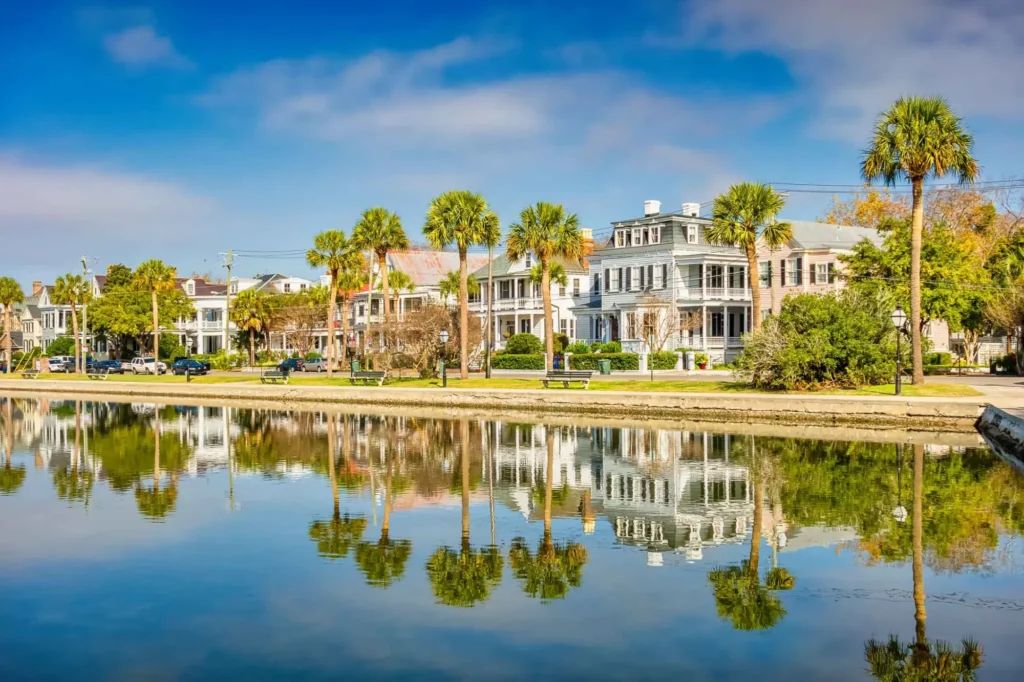
Get Rid of Millipedes in Your I’on Home for Good
Lakeside paths, deep porches, and ornamental plantings in I’On create cool microclimates that millipedes love. They appear along baseboards and porches after showers.
All U Need Pest Control aligns exterior treatments with irrigation schedules and seals hairline gaps for lasting relief. Call 1 (888) 239-BUGS.
Pest Control Services in I'on, SC
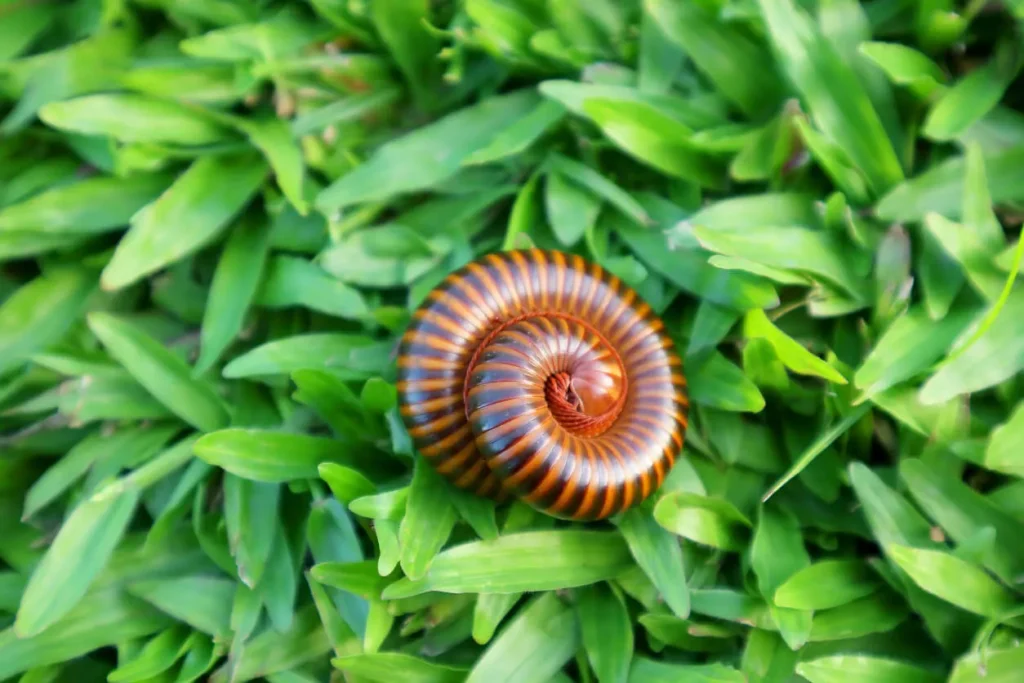
Millipede Control in I’on, SC
I’on, SC, is a picturesque community in Mount Pleasant known for its elegant Lowcountry architecture, manicured landscaping, and marshfront views. But its very charm also creates an ideal environment for millipedes. The subtropical climate with warm temperatures, high humidity, and regular summer storms fosters damp, shaded areas where millipedes thrive. After heavy rainfall or when tides saturate nearby marshes, these small pests often emerge in noticeable numbers, appearing along walkways, porches, garages, and even inside the stylish homes that define I’on.
Millipedes don’t bite or spread disease, but their defensive secretions can stain flooring, carpets, and other porous materials, leaving residents frustrated. In addition, their sheer numbers during peak migration periods can overwhelm homeowners, especially when they infiltrate living spaces.
The architecture in I’on, with raised homes, broad porches, shaded courtyards, and decorative gardens, creates many habitats for millipedes. Dense plantings, pine straw mulch, and ornamental landscaping trap moisture and organic matter close to the foundation, attracting these pests.
All U Need Pest Control specializes in managing pest problems unique to neighborhoods like I’on. Our treatments address not only visible infestations but also the environmental conditions that sustain them. We provide homeowners with effective, long-term solutions that blend seamlessly into the aesthetic and lifestyle of this beautiful coastal community.
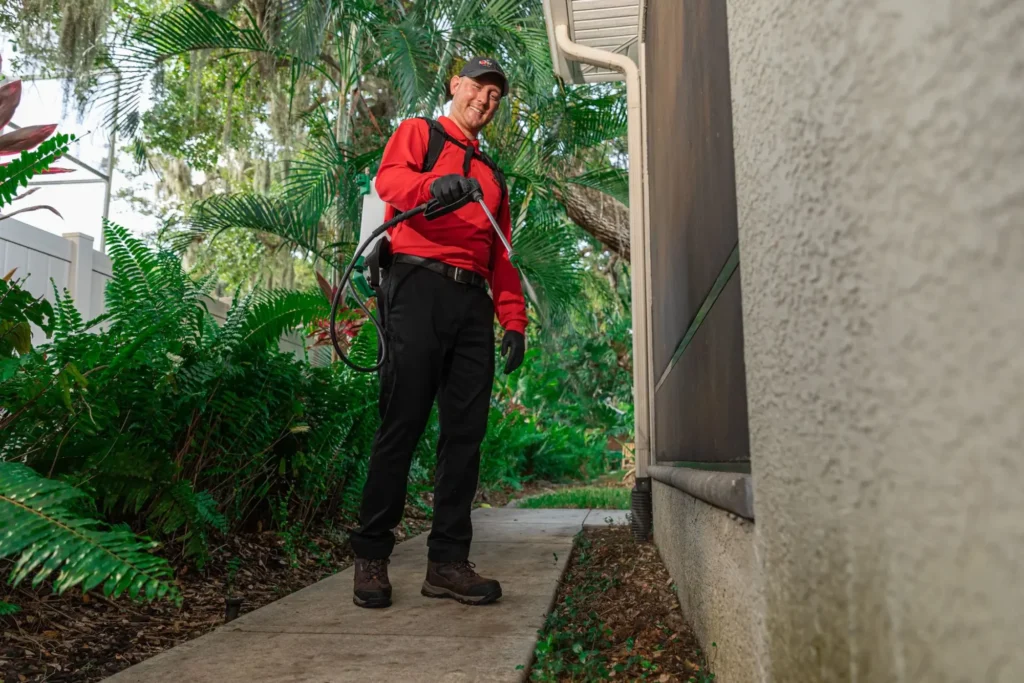
How to Get Rid of Millipedes in I’on, SC
Millipedes are attracted to damp soil and decomposing organic material. In I’on, shaded walkways, pine straw beds, and leaf-filled corners provide the perfect breeding grounds. After storms, millipedes migrate toward drier zones, often entering homes through small gaps. Sweeping them out or spraying them indoors only addresses the surface issue without fixing the causes outside.
A comprehensive plan for I’on homeowners includes:
Correct moisture. Extend downspouts and ensure drainage systems divert water away from foundations. Encapsulate crawl spaces or install dehumidifiers under elevated homes. Slab-built properties benefit from maintaining vegetation-free strips that keep soil dry against walls.
Modify the habitat. Replace dense pine straw with gravel or thin mulch near your foundation. Collect fallen leaves from live oaks, palmettos, and crepe myrtles after storms. Trim dense hedges to restore airflow and reduce shaded damp areas.
Seal potential entry points. Install door sweeps, maintain sealed thresholds, and add protective covers over weep holes. Screen crawl-space vents and reinforce openings unique to I’on’s Lowcountry-style architecture.
Target treatments. Professional perimeter applications create a barrier around patios, foundations, and porches. With frequent storms in the region, careful timing of treatments ensures protection holds up even in wet conditions.
Ongoing service. Seasonal maintenance is crucial, as millipede pressure is highest from spring through late fall in I’on’s humid environment.
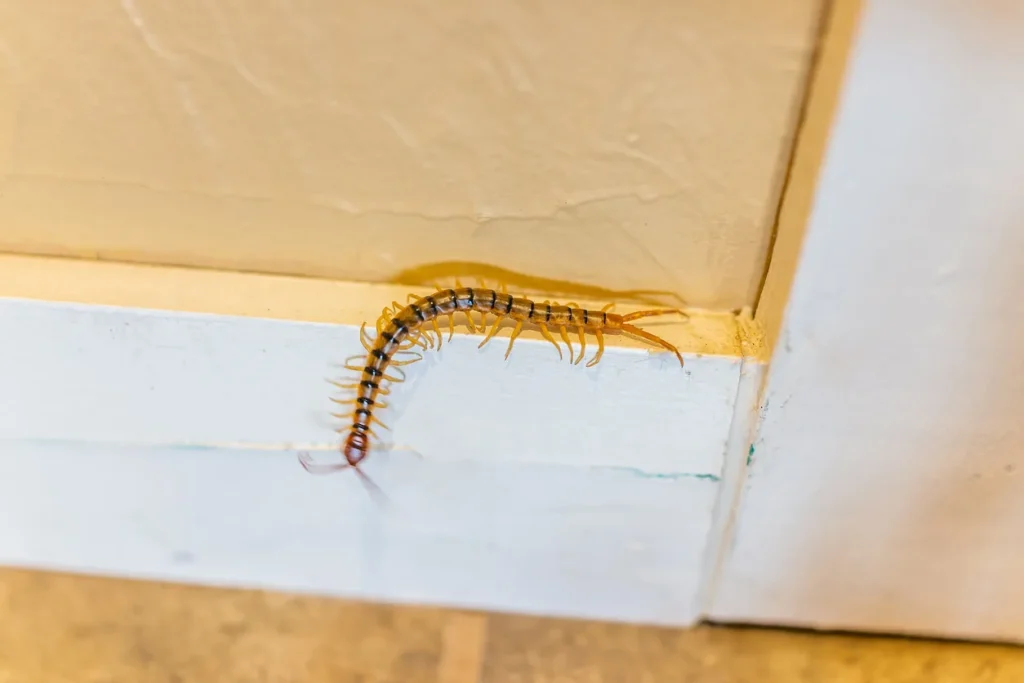
Millipede Treatment in I’on, SC
All U Need Pest Control designs pest control programs specifically for I’on’s conditions. Instead of one-size-fits-all sprays, we evaluate landscaping, drainage, and architecture to build a targeted strategy that keeps millipedes from migrating indoors.
- The variety of native and ornamental plants around homes that affect shade and soil moisture.
- The depth and type of mulch or stone bordering porches, foundations, and walkways.
- Irrigation practices and drainage, including how water collects after summer storms.
- The proximity of marshes, ponds, and shaded courtyards where damp conditions linger.
We refine this plan further by analyzing:
- The timing of millipede appearances, whether after storms, at night, or around garages and crawl spaces.
- Seasonal and environmental triggers like king tides, tropical storms, or spikes in humidity that drive migrations indoors.
This combination of Integrated Pest Management and carefully selected treatments ensures long-lasting relief for homeowners in I’on.
Comprehensive Inspection/Consultation
Our inspection covers every aspect of your home and property. We check drainage flow, downspouts, grading, irrigation overspray, mulch placement, and crawl-space ventilation. For older homes, we inspect vapor barriers and wood elements that retain moisture. For newer homes, we assess how dense landscaping may trap water. These findings allow us to design a tailored plan that balances effectiveness with aesthetics.
Treatment
Treatments focus on areas where millipedes most often migrate, such as porches, patios, foundation lines, and crawl-space access points. Elevated homes, modern designs, and classic Charleston-style townhouses each require unique application methods. Scheduling treatments around the island’s frequent storms ensures the barrier remains active during high millipede activity.
Ongoing Maintenance
Because I’on experiences extended humid seasons and heavy summer rainfall, one-time treatments are not enough. Our seasonal maintenance plans provide recurring protection. We return after major storms or high-tide cycles to reinforce treatments and keep infestations under control. This ensures millipedes don’t gain a foothold in your home again.
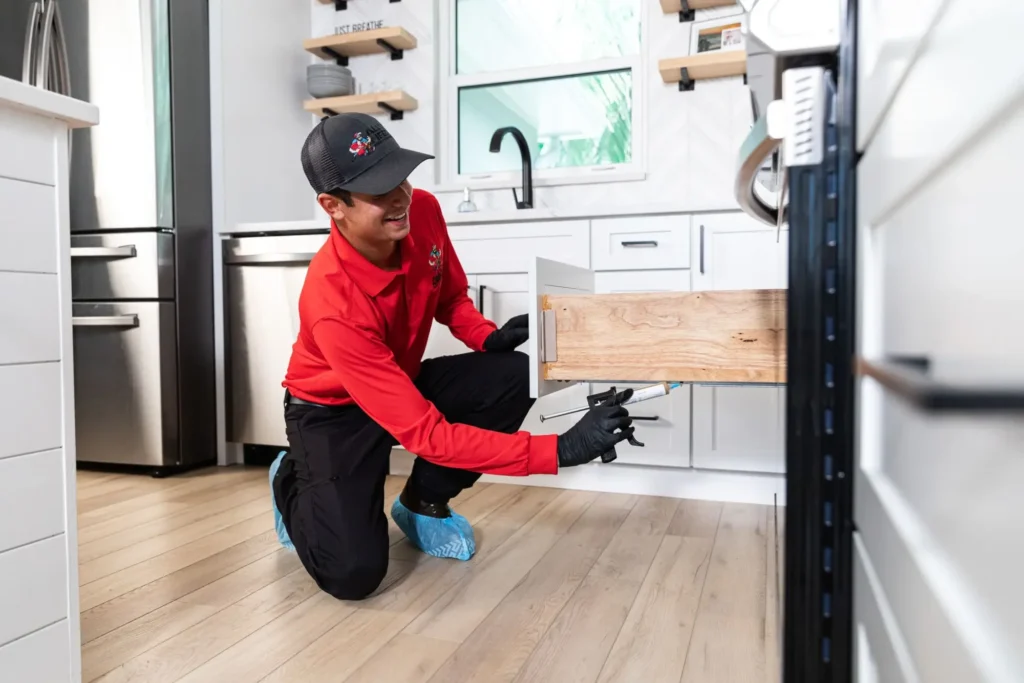
Signs of a Millipede Infestation in I’on, SC
Sightings in Damp Areas
Millipedes typically appear in shaded, moist spots inside and outside homes. In I’on, this includes crawl spaces, bathrooms, and laundry rooms indoors, and pine straw beds, porch steps, or shaded patios outdoors. Sudden spikes in activity often occur after multi-day storms or high humidity streaks.
Damage to Plants
Although millipedes feed mainly on decaying organic matter, they sometimes chew on tender seedlings and soft-stemmed plants in shaded gardens. I’on residents with decorative beds or potted plants may notice irregular damage when millipede populations peak. Reducing debris and mulch depth helps limit this activity.
Dead Millipedes
Inside homes, curled and dried millipede remains often gather along baseboards, in garages, or near doorways. Their deaths indoors indicate they are being drawn inside by exterior conditions but cannot survive in drier air. This sign points to outdoor moisture issues that must be corrected to prevent more intrusions.
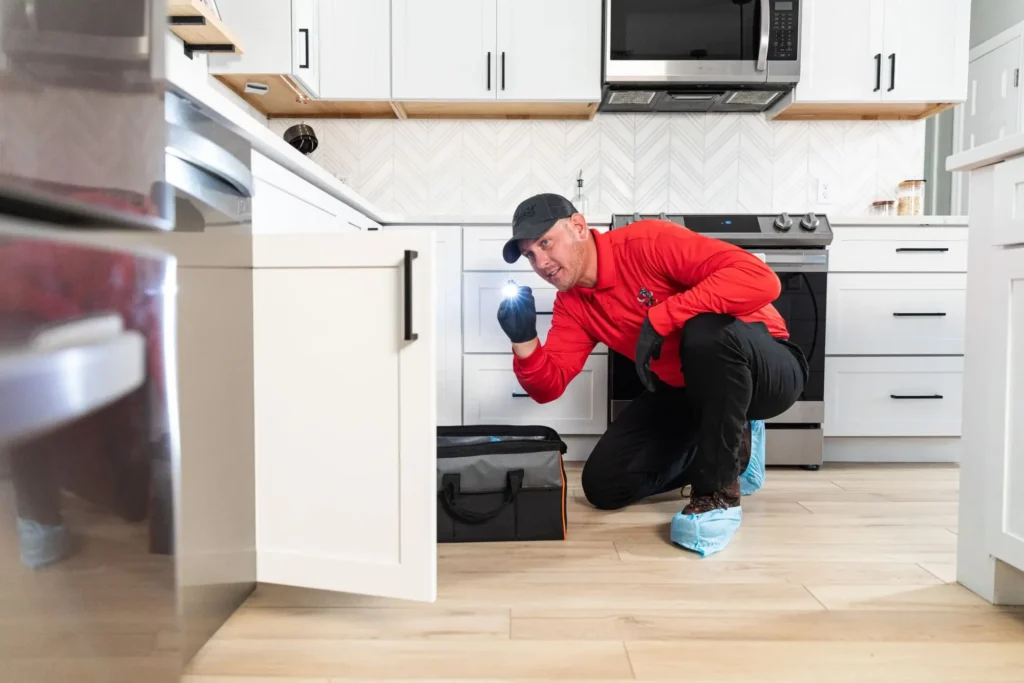
How to Check for Millipedes in Your I’on Home
If you suspect millipede activity, inspect the following areas closely:
- Damp interior zones like crawl spaces, bathrooms, and laundry rooms where humidity lingers.
- Entry gaps including unsealed thresholds, weep holes, cracks around pipes, and worn door sweeps.
- Pine straw, mulch, and leaf litter that sit directly against exterior walls or under dense shrubs.
- Patio areas, downspout discharge points, and low-lying lawn sections that hold water after storms.
When infestations continue despite cleanup, professional inspections reveal hidden pathways and triggers. Our team identifies environmental causes and entry points that might otherwise go unnoticed.
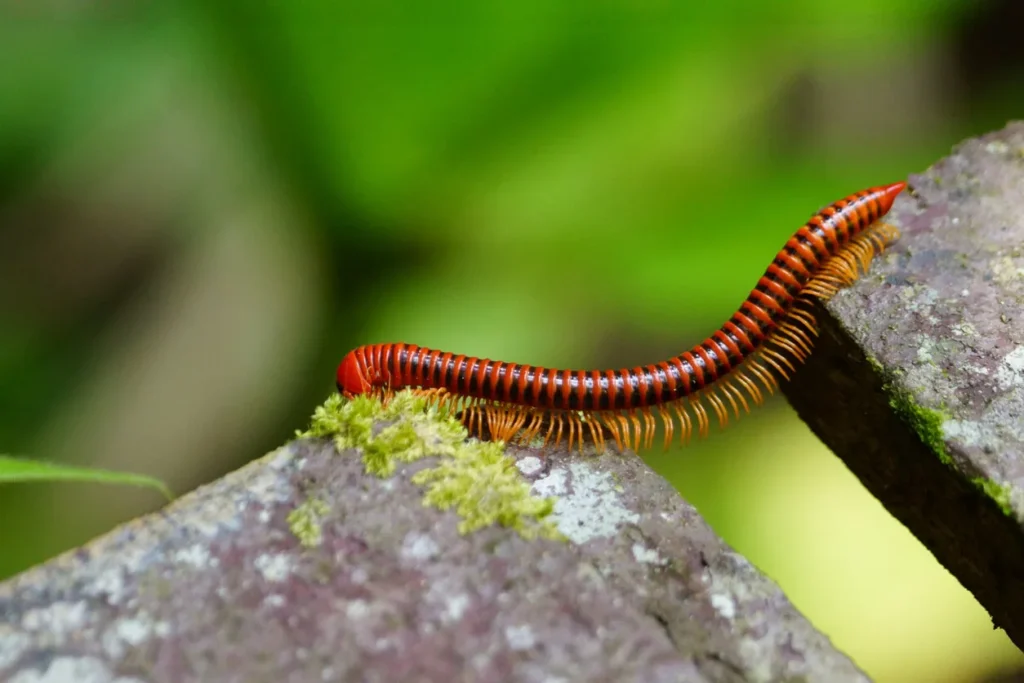
What Do Millipedes Look Like?
Millipedes are cylindrical arthropods with multiple segments, each carrying two pairs of legs. In I’on, they are most often dark brown or gray, blending in with mulch, soil, and pine straw. Unlike centipedes, which are flatter and fast-moving, millipedes crawl slowly and curl into spirals when threatened.
Other features that help identify millipedes include:
- Dark or gray coloration that blends easily with I’on’s coastal soils and mulched landscapes.
- Rounded, twig-like bodies with many segments and multiple pairs of legs.
- Short antennae that guide them through shaded, damp areas around homes.
Millipedes can live several years and reproduce by laying eggs in moist soil. By keeping property perimeters dry and clear of organic debris, homeowners reduce the chances of these pests multiplying near their houses.
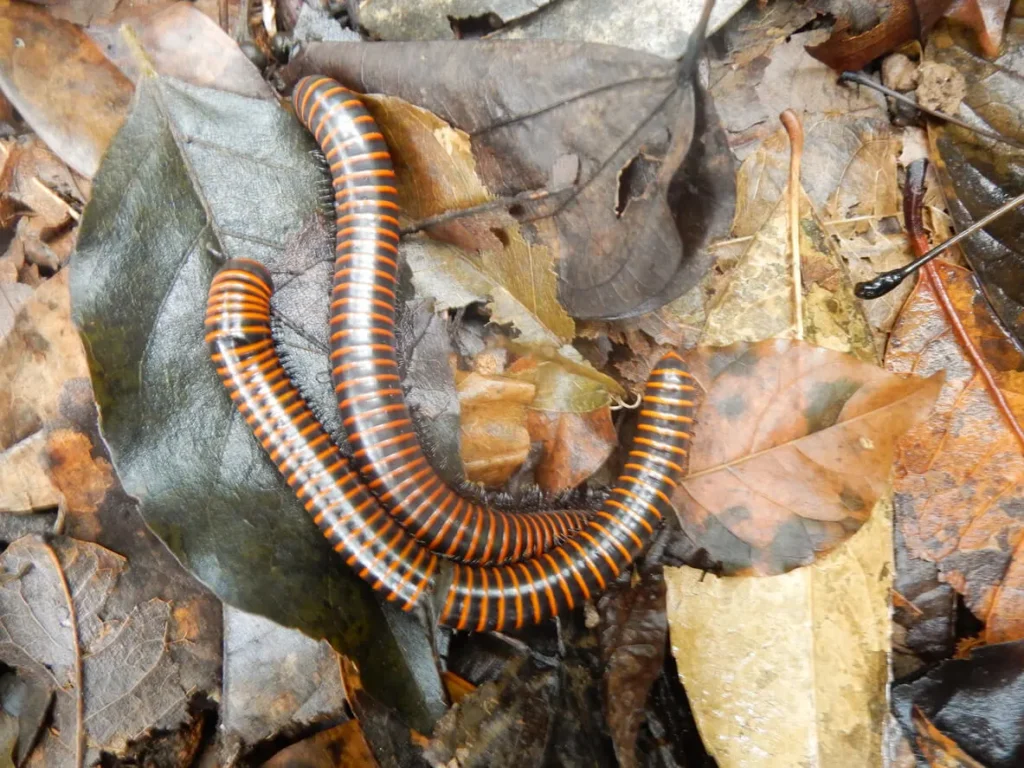
Eco-Friendly Solutions
At All U Need Pest Control, we recognize that I’on is not only a neighborhood but also a carefully planned community built around scenic lakes, marshes, and walking paths. Preserving its natural beauty while solving pest problems is our priority. That’s why we emphasize eco-friendly practices that reduce millipede populations without disrupting the delicate ecosystem that makes I’on so desirable.
Minimum-Risk Pesticides
When chemical products are necessary, we use treatments that are low-risk and applied only in carefully chosen locations. These include thresholds, crawl-space doors, porch steps, and foundation edges where millipedes travel. By focusing applications on these key areas, we ensure results without exposing people, pets, or the surrounding landscape to unnecessary product use.
Eco-Friendly Solutions
We also encourage natural and physical adjustments that reduce pest pressure. This includes replacing pine straw near walls with gravel, trimming hedges to improve airflow, and reducing heavy mulch beds. For I’on residents, these adjustments not only discourage millipedes but also enhance the overall curb appeal of the property while aligning with the community’s environmentally conscious design.
IPM Practices
Integrated Pest Management (IPM) is the foundation of our approach. By combining inspections, exclusion techniques, sanitation, and targeted treatments, we reduce millipede populations in a sustainable way. In I’on, this means accounting for the neighborhood’s lakeside settings, shaded courtyards, and frequent summer storms. Our IPM methods ensure long-term results while respecting the Lowcountry environment.
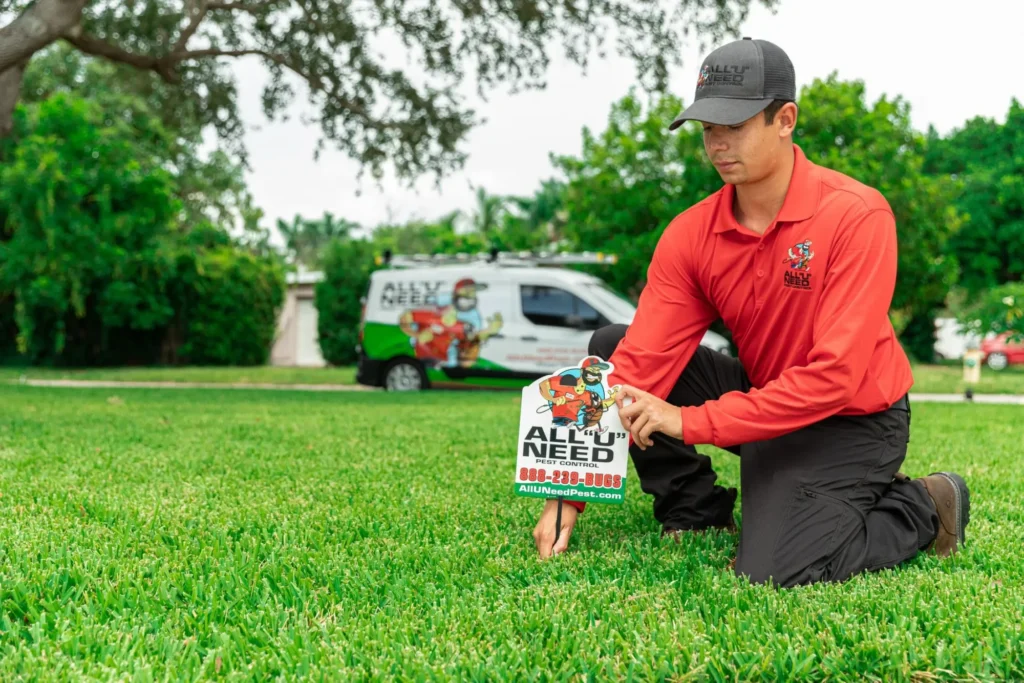
How to Prevent Millipedes in I’on, SC
Reduce Moisture Levels
Moisture is the main factor that draws millipedes. Inside the home, dehumidifiers in crawl spaces, exhaust fans in bathrooms, and proper airflow in basements or storage areas help maintain balance. Outdoors, gutters and downspouts should be clear and extended away from foundations. Splash blocks, extensions, and improved grading prevent standing water around patios and porches. Irrigation should be adjusted to avoid keeping soil near walls constantly wet.
Seal Entry Points
Millipedes enter homes through even the smallest gaps. Installing door sweeps, sealing thresholds, covering weep holes, and repairing torn screens all reduce entry routes. In I’on’s raised and Lowcountry-style homes, crawl-space doors and decorative lattice must also be properly sealed. After storms or heavy rainfall, recheck for new gaps that could let pests inside.
Remove Organic Debris
Leaf litter and mulch provide food and shelter for millipedes. Regularly rake leaves from oaks and palmettos, and avoid stacking debris near foundations. Keep mulch layers thin and away from siding. Compost should be stored in sealed bins at a distance from the house. Maintaining a clean perimeter significantly reduces millipede populations.
Change Your Landscaping
Simple landscaping changes can make a big difference. Replace pine straw with stone borders along foundations to help soil dry more quickly. Adjust yard grading so water drains away from the home. Select plants that require less watering, particularly for areas near patios and walkways. In I’on, where rain and high humidity are common, these adjustments limit the conditions that sustain millipedes.
Keep Your Home Clean
Indoors, simple cleaning habits can help. Avoid storing damp cardboard boxes on garage floors, keep laundry areas dry, and remove wet mats after rain. Fix plumbing leaks quickly and wipe down condensation from windowsills during humid days. By eliminating moisture and clutter, you make your home less attractive to pests.
Work With a Pest Control Expert
Partnering with professionals ensures thorough protection. All U Need Pest Control offers treatments designed for I’on residents that go beyond surface-level fixes.
- Sealing common entry points such as cracks, thresholds, and weep holes while maintaining airflow in raised and historic homes.
- Applying treatments along travel routes and scheduling them carefully around rainfall for maximum protection.
- Providing community-specific advice such as mulch adjustments, drainage improvements, and crawl-space dehumidification.
Location Contact:
419 N Cedar St Summerville, SC 29483
Get Directions for 419 N Cedar StSummerville, SC 29483 on Google Maps843-489-8818
Call All "U" Need Pest Control